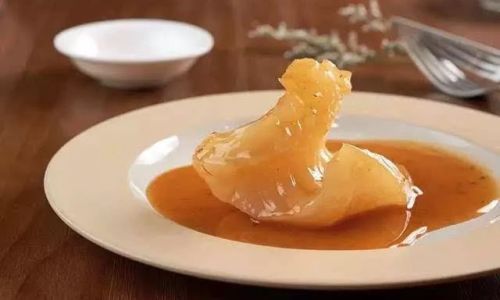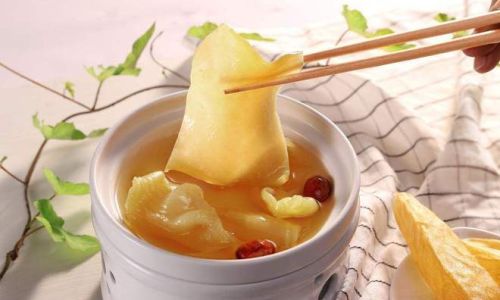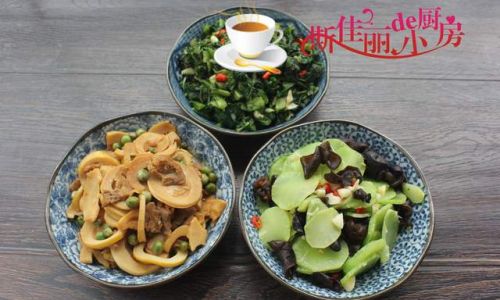Introduction
In the realm of culinary delights, few ingredients carry as much mystique and nutritional value as fish maw, also known as huajiao in Chinese. This gelatinous substance derived from the swim bladder of various fish species has been a staple in Asian cuisines, particularly in Chinese and Southeast Asian cooking, for centuries. Renowned for its rich collagen content, fish maw is believed to offer numerous health benefits, including skin rejuvenation, joint health improvement, and enhanced immune function. However, the process of preparing and consuming fish maw can be daunting for the uninitiated. This comprehensive guide aims to demystify the art of eating fish maw, from sourcing and selecting the best quality to various cooking methods and tips for enjoying this unique ingredient.
Chapter 1: Understanding Fish Maw
1 What is Fish Maw?
Fish maw, scientifically known as the swim bladder of fish, serves a crucial function in the aquatic world by regulating buoyancy. When harvested and processed, it transforms into a translucent, gelatinous substance that is both versatile and nutritious. Different fish species yield varying textures and flavors, with larger fish like the sturgeon producing maw that is especially prized for its thickness and texture.

2 Nutritional Benefits
Fish maw is a treasure trove of nutrients, primarily collagen, which is a vital protein for skin, hair, nails, and joint health. It also contains essential amino acids, minerals like calcium and phosphorus, and trace elements beneficial for overall well-being. Regular consumption is believed to promote skin elasticity, reduce fine lines and wrinkles, and support joint flexibility and strength.
3 Types of Fish Maw
The type of fish determines the quality and characteristics of the maw. Some of the most sought-after varieties include:
- Sturgeon Maw: Renowned for its large size, thickness, and superior texture.
- Shark Maw: Often considered a delicacy, shark maw is known for its high collagen content.
- Tilapia Maw: More affordable and readily available, suitable for everyday cooking.
- Carp Maw: Commonly used in traditional Chinese medicine and cooking.
Chapter 2: Sourcing and Selecting Fish Maw
1 Where to Buy
Finding high-quality fish maw can be challenging, but several avenues exist for sourcing this ingredient:
- Specialty Markets: Asian grocery stores and wet markets often stock fresh or dried fish maw.
- Online Retailers: Websites specializing in gourmet and traditional foods offer a wide range of fish maw options.
- Direct from Fishermen: In coastal areas, direct purchases from fishermen can ensure freshness and authenticity.
2 Quality Indicators
When selecting fish maw, look for the following qualities:
- Appearance: Fresh maw should be translucent with a slight shimmer. Dried maw should be firm, with no signs of mold or discoloration.
- Smell: It should have a mild, fishy aroma. Avoid any that smell strongly of ammonia or are overly pungent.
- Texture: Fresh maw should be elastic and slightly tacky to the touch. Dried maw should snap cleanly when bent.
Chapter 3: Preparing Fish Maw
1 Cleaning Fresh Fish Maw
Cleaning fresh fish maw requires care to remove any impurities and ensure a pleasant texture and flavor:
- Rinse Thoroughly: Under cold running water, gently rinse the maw inside and out.
- Remove Membranes: Peel off any thin membranes or blood vessels attached to the interior.
- Soak and Blanch: Soak in cold water for about 30 minutes, then blanch in boiling water for 2-3 minutes to firm up the texture and remove any remaining impurities.
2 Preparing Dried Fish Maw
Dried fish maw requires more extensive preparation due to its concentrated form:
- Soak Overnight: Place dried maw in a bowl of cold water and soak for at least 12 hours, changing the water every 4-6 hours to remove excess salt and impurities.
- Boil and Simmer: After soaking, boil the maw in fresh water for about 30 minutes, then simmer for another 1-2 hours until it softens and expands.
- Clean and Trim: Once cooked, carefully clean any remaining impurities and trim off any tough edges.
Chapter 4: Cooking Fish Maw
1 Basic Cooking Techniques
Fish maw’s versatility allows for a multitude of cooking methods, each enhancing its unique texture and flavor:
- Steaming: A gentle cooking method that preserves the maw’s delicate texture and natural flavors.
- Soup Making: Simmering fish maw in broth creates rich, nourishing soups that are perfect for cold weather.
- Stir-Frying: Quick stir-fries with vegetables and sauces add a savory twist to this ingredient.
- Braising: Slow cooking with aromatic spices and herbs transforms fish maw into a tender, flavorful dish.
2 Popular Recipes

2.1 Fish Maw Soup with Chicken and Ginseng
Ingredients:
- 200g dried fish maw, prepared
- 1 whole chicken, cut into pieces
- 2 slices of ginseng
- 6 red dates, pitted
- 8 cups of water
- Salt to taste
Instructions:
- Boil the prepared fish maw and chicken pieces in water for about 15 minutes to remove impurities. Drain and rinse.
- In a large pot, combine the maw, chicken, ginseng, and red dates. Add water and bring to a boil.
- Reduce heat and simmer for 2-3 hours, skimming any foam that rises to the surface.
- Season with salt and serve hot.
2.2 Steamed Fish Maw with Black Bean Sauce
Ingredients:
- 200g fresh fish maw, cleaned and sliced
- 2 tbsp fermented black beans, rinsed and mashed
- 2 cloves garlic, minced
- 1 tbsp soy sauce
- 1 tbsp Shaoxing wine
- 1 tbsp sugar
- 1 tbsp sesame oil
- Salt and pepper to taste
- Green onions, chopped, for garnish
Instructions:
- In a bowl, mix the mashed black beans, garlic, soy sauce, Shaoxing wine, sugar, sesame oil, salt, and pepper.
- Arrange the fish maw slices in a steaming dish and pour the sauce over them.
- Steam over boiling water for about 15-20 minutes until the maw is tender.
- Garnish with chopped green onions and serve hot.
2.3 Stir-Fried Fish Maw with Vegetables
Ingredients:
- 200g prepared fish maw, sliced into strips
- 1 cup broccoli florets
- 1 red bell pepper, sliced
- 1 carrot, sliced into thin rounds
- 3 cloves garlic, minced
- 2 tbsp vegetable oil
- 1 tbsp oyster sauce
- 1 tbsp soy sauce
- 1 tbsp Shaoxing wine
- Salt and pepper to taste
Instructions:
- Heat vegetable oil in a wok or large skillet over medium-high heat. Add garlic and stir-fry until fragrant.
- Add the broccoli, bell pepper, and carrot. Stir-fry for about 3-4 minutes until vegetables are tender-crisp.
- Add the fish maw strips and stir-fry for another 2-3 minutes.
- Pour in the oyster sauce, soy sauce, and Shaoxing wine. Stir well to coat all ingredients.
- Season with salt and pepper, and serve hot.
Chapter 5: Tips for Enjoying Fish Maw
1 Pairing and Serving Suggestions
Fish maw pairs well with a variety of flavors and ingredients, enhancing both its taste and nutritional profile:
- Herbs and Spices: Ginger, garlic, and green onions add a fresh, aromatic touch.
- Vegetables: Broccoli, bell peppers, and carrots provide color, texture, and additional nutrients.
- Meats and Seafood: Chicken, pork, and shrimp complement the maw’s delicate flavor.
2 Storage and Shelf Life
Proper storage is crucial to maintaining fish maw’s quality:
- Fresh Maw: Store in an airtight container in the refrigerator for up to 3 days.
- Dried Maw: Keep in a cool, dry place away from direct sunlight. Properly stored, dried maw can last for several months to a year.
Conclusion
Fish maw, with its rich history and myriad health benefits, stands as a testament to the culinary wisdom of Asian cultures. By mastering the art of sourcing, preparing, and cooking fish maw, one can unlock a world of flavorful, nourishing dishes that cater to both the palate and the soul. Whether enjoyed in a hearty soup, a delicate steam, or a vibrant stir-fry, fish maw offers a unique culinary experience that transcends the ordinary, inviting you to embark on a journey of discovery and delight. So, the next time you






0 comments